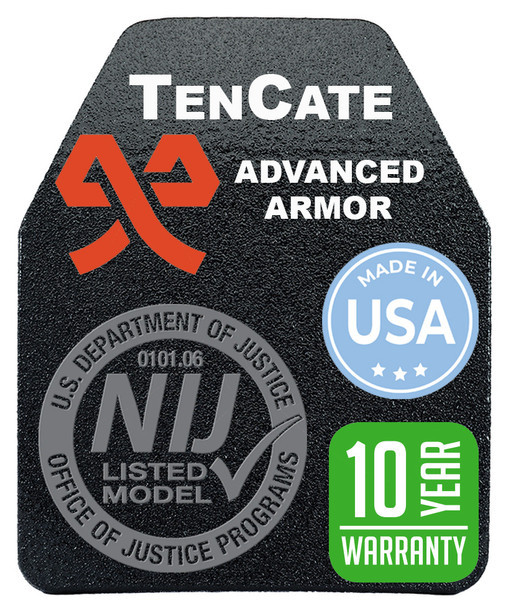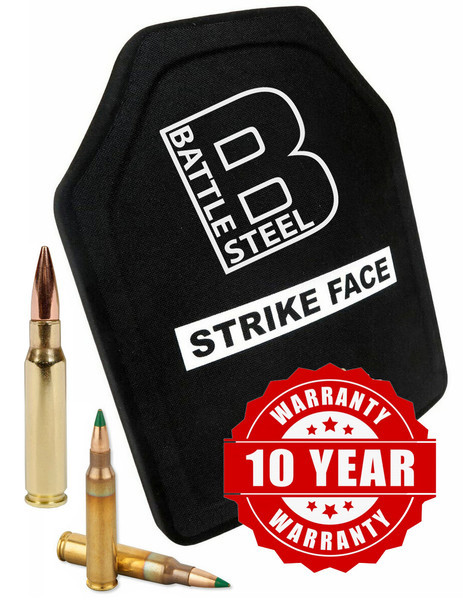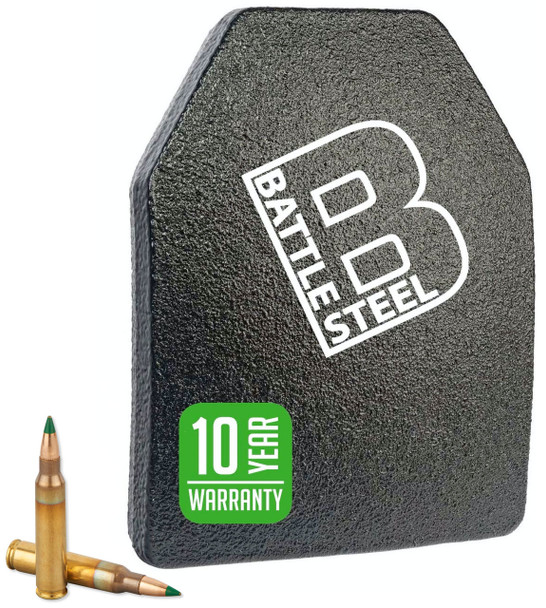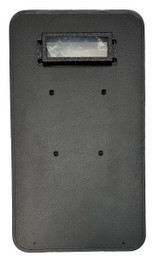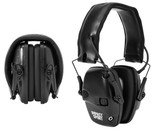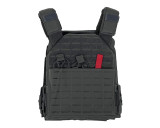Level III or Level III+ Body Armor — Is There Really a Difference?
So, you were scanning a body armor catalog and seeing “Level III+” label here and there asking yourself what it means. While the matter is as old as heck, answering this question is not as easy as it may seem.
In this article: what does the “plus” in the Level III+ armor actually mean, does it really perform better than conventional NIJ Level III, and what types of ammunition does it stop. Also, we review whether you need such armor and how to choose between Level III and III+ if you have to.
About armor protection levels
If you are very new to body armors, you need to know about standard threat levels and associated body armor classes. According to the NIJ, there are several body armor protection levels based on threat types they can reliably stop:
- Level IIA and Level II are for soft body armor. Such armor plates can stop the majority of pistol rounds such as 9 mm FMJ RN, .357 JSP and such.
- Level IIIA addresses such ballistic threats as .44 MAG, .357 MAG, .357 SIG, 9 mm etc.
- Level III protects against rifle threats: 7.62 mm × 39, 5.56 mm × 45 M193, 7.62 mm × 51 M80.
- Finally, Level IV is hard armor that withstands armor piercing and sniper rifle shots, specifically .30-06 M2AP.
Now, why do we call these armor levels standard? Because the NIJ has a specific ballistic armor standard called NIJ 0101.06 that describes the exact testing procedures to measure each armor sample’s stopping power against standardized set of ammunition types, velocities and weights.
Level III Body Armor in details
Before we get to Level III+, let’s take a closer look at the standard Level III body armor plates.
According to NIJ 0101.06, body armor certified as Level III should stop a certain number of shots (usually three) such as 7.62 FMJ lead core ammo. In fact, this is rather impressive, so no wonder Level III armor is so widespread among law enforcement officers.
Materials Level III armor plates are made from include:
- Steel. Durable and efficient material that delivers decent protection along with increased weight.
- Ceramic plates are another option. Very efficient protection, lighter than steel.
- Polymer armor. Contemporary polymers such as high molecular weight polyethylene can reliably stop many threats, even high velocity ones.
These materials are often used together to achieve better performance of the Level III armor in specific scenarios.
How comes Level III may not be enough?
With all above being said, why do we need Level III+ after all? Sounds like Level III can deal with rifle rounds, and we have Level IV for more powerful threats, do we?
In reality, though, Level III have troubles stopping some custom or rare rounds, such as higher velocity shots from a custom-modified gun, or 5.56 “green tip” ammunition. Some steel Level III plates can have troubles with M193, and polymer Level III armors struggle with M855.
As a result, many body armor manufacturers started improving their products above the NIJ standard to address those threats. They called this body armor type Level III+.
Level III+ Body Armor in details
Level III plus was designed to withstand non-standard threats normal Level III cannot. Normally, if you see the plus sign near the Level III armor class, this means that the manufacturer conducted its own ballistic tests for this armor to make sure it stops a certain range of ammunition beyond the scope of NIJ 0101.06.
Typical threats Level III+ body armor can deal with are as follows (but be sure to read the disclaimer below!):
- 5.56×45 M855 (aka “green tip” or “penetrator”)
- .30-06 JSP
- AK47 AP rounds
- 7.62×39mm PS ball
- 7.62×51 M80 NATO Ball (at velocity higher than 2,780 feet per second)
- and other higher velocity ammunition
Note that Level III+ is not a replacement for Level IV armor! It only enhances Level III beyond the standard.
Level III+ and standards: you MUST know that
Its official: there is NO a Level III+ standard that could definitely tell you what exact threats a particular piece of Level III+ body armor is able to stop. You should solely and exclusively rely on what the manufacturer says (and to what extent you can trust it?). This makes a huge difference to NIJ Level III which *IS* a standard.
Partially because of this, and also because of discrepancy between real-world threats and underperformance of NIJ Level III armor in stopping them, in 2023 the NIJ introduced the whole new NIJ 0101.07 standard to address the issue. We provided a complete review of the new NIJ RF2 standard here.
How to decide what Level III/III+ body armor to buy
There are two schools of thought regarding the Level III vs. Level III+ choice.
First opinion is to select Level III+ armor whenever possible. This may sound reasonable, because Level III+ armor plate stops everything Level III can stop and additionally protects you against more sophisticated ammunition. However, this is a false notion, and here is why.
Level III+ body armor gives you more protection, this is true. But these plates are also weightier and a bit bulkier in comparison with NIJ Level III standard plates. Not too much, but the difference may be crucial in many situations.
So the second way to settle on a specific armor type is to evaluate potential threats you may encounter on the mission and then decide whether you need increased protection or not. In fact we recommend doing so. Assess your mission and see if “green tip” threat needs to be addressed. And if not, why would you need Level III+ armor vest?
As for other considerations, they are as follows:
- Budget. Level III+ armor plates may require additional investments. Such plates cost more. Of course, there are budget versions too on the market, so this is all about quality/price ratio.
- Comfort. As we have said above, Level III+ plates are a bit thicker and weightier than Level III. While for many purposes this is not a problem, sometimes this added weight and reduced mobility are a decisive factor.
- Plate carrier. While the majority of Level III+ armor plates do not require any specific plate carrier, you should clarify this matter before you buy one.
- Instrumental testing. When you read about a Level III plus armor on a website, that’s one thing. But seeing the results of instrumental tests is another. Don’t trust marketing slogans and copywriting shenanigans. Ask the manufacturer for actual documents and certificates indicating the real-world performance of the armor plate.
Frequently Asked Questions
Is Level III+ armor better than Level III?
Level III+ body armor offers the same level of protection as normal NIJ certified Level III armor has. In addition, Level III+ armor plates can stop some rounds that NIJ Level III armor cannot deal with. However, the range of protection offered by Level III+ varies across manufacturers, so closer review is recommended for each particular piece of “three-plus” armor.
Are Level III+ body armor plates just marketing?
No. While it certainly may sound as such, Level III+ armor is not marketing. These plates do demonstrate better stopping power in comparison with NIJ Level III certification tests.
Do I need a specific plate carrier for Level III+ plates?
Generally, no. Level III+ plates can be inserted into any normal plate carrier that supports Level III armor.
What rounds can Level III+ armor stop?
This depends on the manufacturer. You should always refer to exact specifications of the armor to make sure it can stop the threat you want it to stop. In general, Level III+ plates can stop higher velocity 7.62 or 5.56 bullets, as well as special kinds of ammunition designed to penetrate Level III armor, such as the infamous M855.
Who needs Level III+ body armor?
Speaking of law enforcement officers, they rarely if ever need something better than NIJ Level III. This armor type effectively stops the most common threats they face during their jobs.
However, military, Special Forces, and sometimes bodyguards may need Level III+. These guys much more often expose themselves to dangerous threats including 5.56 AK47 shots or high velocity ammunition fired from modified rifles. Level III armor is not enough to deliver the protection they need.
Recent Posts
-
Understanding Ballistic Shield Ratings and Their Applications
The Trusted Name in Tactical Defense - BattleSteel® When it comes to protecting those who protect us …2025-04-19 -
The Importance of Hearing Protection in Tactical Environments
The Legacy of BattleSteel® BattleSteel® is a trusted name in the world of tactical defense equipment …2025-04-14 -
How to Properly Fit and Wear a Plate Carrier
About BattleSteel and Their Mission BattleSteel is a trusted name in the tactical gear industry, ren …2025-04-11
